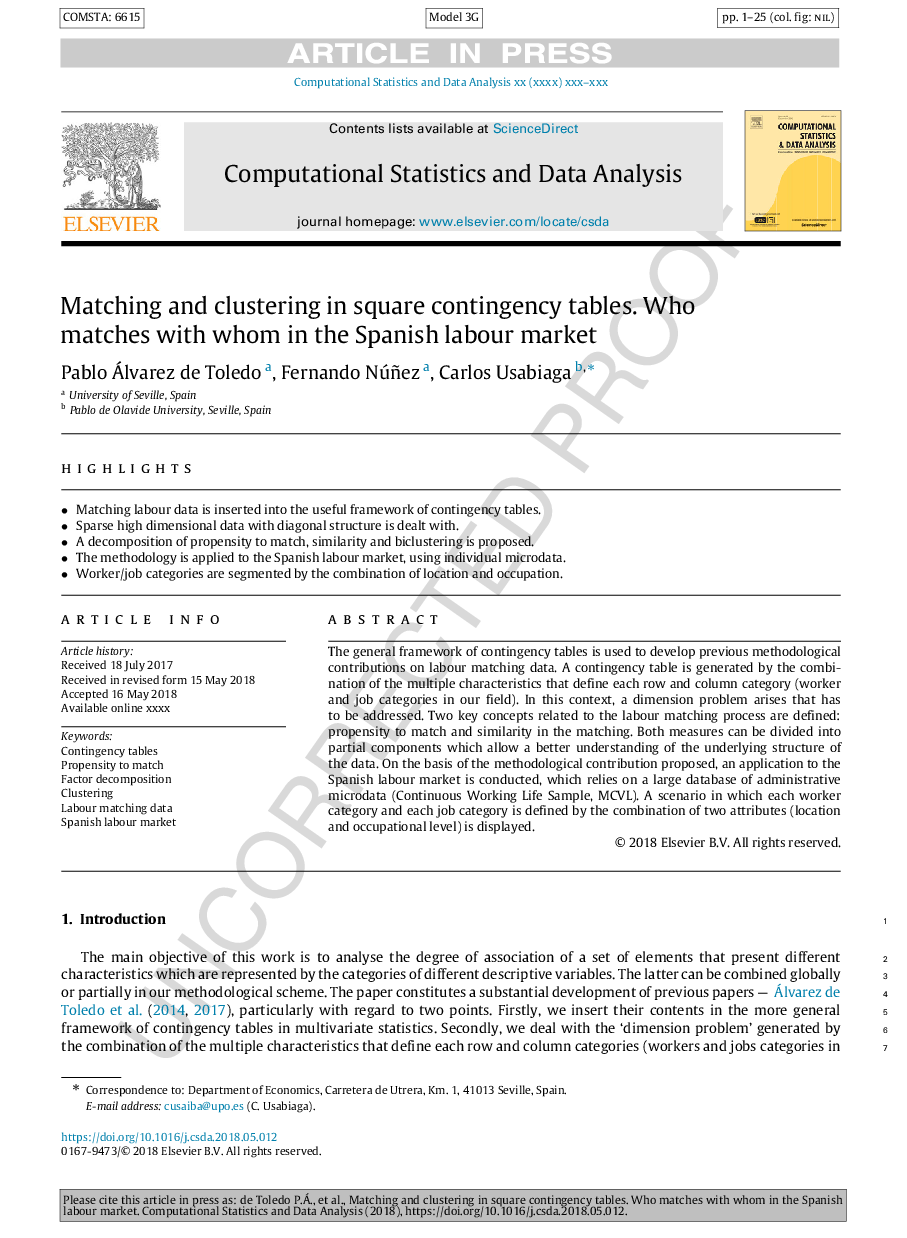| Article ID | Journal | Published Year | Pages | File Type |
|---|---|---|---|---|
| 6868645 | Computational Statistics & Data Analysis | 2018 | 25 Pages |
Abstract
The general framework of contingency tables is used to develop previous methodological contributions on labour matching data. A contingency table is generated by the combination of the multiple characteristics that define each row and column category (worker and job categories in our field). In this context, a dimension problem arises that has to be addressed. Two key concepts related to the labour matching process are defined: propensity to match and similarity in the matching. Both measures can be divided into partial components which allow a better understanding of the underlying structure of the data. On the basis of the methodological contribution proposed, an application to the Spanish labour market is conducted, which relies on a large database of administrative microdata (Continuous Working Life Sample, MCVL). A scenario in which each worker category and each job category is defined by the combination of two attributes (location and occupational level) is displayed.
Related Topics
Physical Sciences and Engineering
Computer Science
Computational Theory and Mathematics
Authors
Pablo Álvarez de Toledo, Fernando Núñez, Carlos Usabiaga,
